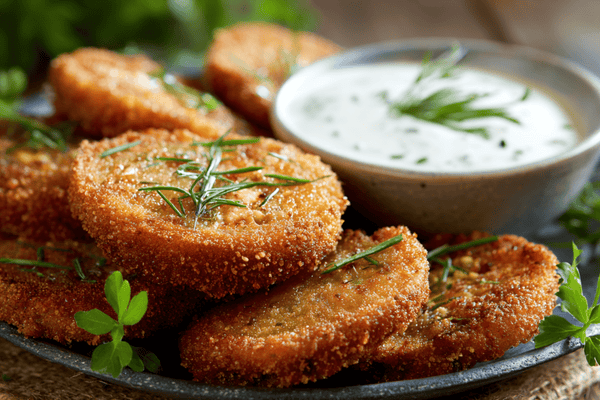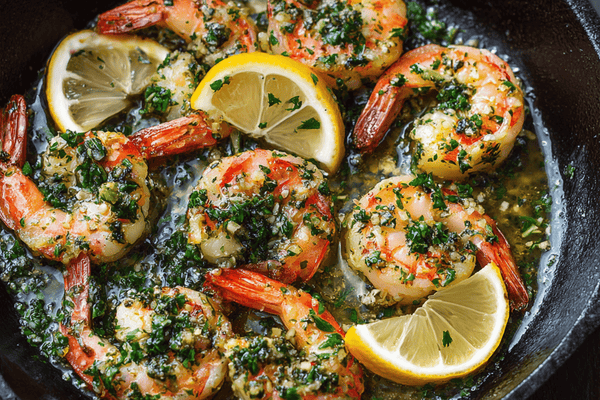Dragon fruit, also known as pitaya, is a visually stunning fruit that has gained popularity in recent years. With its vibrant pink or yellow skin and distinctive appearance, many people are captivated by its exotic beauty. However, when it comes to the taste of dragon fruit, there is often curiosity about its flavor profile. In this comprehensive guide, we will explore the flavors, textures, and nutritional aspects of dragon fruit, answering the question: "What does dragon fruit taste like?"
The Flavor Profile of Dragon Fruit
Mild Sweetness with Subtle Notes
Dragon fruit generally has a mild, subtly sweet flavor. The taste is delicate rather than overpowering, making it a refreshing choice for those who prefer milder flavors. The taste experience can vary depending on the variety, ripeness, and growing conditions.
Dragon Fruit Varieties and Their Flavors

-
Red Dragon Fruit with White Flesh (Hylocereus undatus):
- The most common variety
- Mild flavor profile with subtle sweetness
- Often compared to the mild sweetness of pear with a crisp, refreshing finish
-
Red Dragon Fruit with Red Flesh (Hylocereus costaricensis):
- Generally sweeter than the white-fleshed variety
- Contains more antioxidant compounds, particularly betalains
- Often described as having a more pronounced flavor
-
Yellow Dragon Fruit (Selenicereus megalanthus):
- Typically sweeter than the red-skinned varieties
- Often described as having tropical flavor notes
- Contains smaller black seeds
Texture Characteristics
The flesh of dragon fruit has a distinctive texture. It's soft and creamy, somewhat similar to a ripe pear or kiwi. Dragon fruit contains tiny black seeds throughout the flesh that are edible and add a slight crunch, similar to kiwi seeds but smaller and less noticeable.
Nutritional Profile
Dragon fruit offers several nutritional benefits. Here's what this fruit provides:
Nutritional Information (per 100g serving):
- Calories: 57 kcal
- Water: 87g
- Protein: 0.36g
- Fat: 0.14g
- Carbohydrates: 15g
- Fiber: 3g
- Sugars: 7.65g
- Vitamin C: 2.5 mg
- Iron: 0.74 mg
- Magnesium: 13mg
- Calcium: 18mg
- Sodium: 0 mg
Source: USDA FoodData Central
Dragon fruit has a relatively low sugar content compared to many other tropical fruits.
Health Aspects
Dragon fruit contains several beneficial compounds:
- Antioxidants: Dragon fruit contains antioxidant compounds, including betalains in the red-fleshed varieties and vitamin C in all varieties.
- Fiber Content: With approximately 3g of fiber per 100g serving, dragon fruit contributes to daily fiber intake.
- Prebiotic Properties: Research suggests dragon fruit may contain prebiotic fibers that can support gut bacteria.
Considerations
While dragon fruit is generally well-tolerated, some individuals may experience allergic reactions, particularly those with known allergies to other tropical fruits like kiwi. As with any new food, it's advisable to try a small amount first if you've never consumed dragon fruit before.
How to Select a Good Dragon Fruit
Quality Indicators
- Appearance: Look for bright, evenly colored skin. For red varieties, look for a vibrant red color without extensive brown patches. Yellow varieties should have an even, golden-yellow color.
- Firmness: The fruit should yield slightly to gentle pressure. Avoid fruit that is rock-hard or very soft with wrinkled skin.
- Stem: The leafy parts (called "bracts") of the fruit should appear dry but not brittle.
- Weight: Choose fruits that feel heavy for their size, which may indicate higher juice content.
- Surface: Small blemishes on the skin are normal and don't typically affect the interior quality.
Seasonal Availability
Dragon fruit is typically available in most major supermarkets and specialty grocery stores throughout the year, with peak season during summer and early fall in most regions. Availability and price may vary by season:
- Peak Season (Summer-Early Fall): More abundant and typically more affordable
- Off-Season: Less available and often higher priced
- Specialty Varieties: Yellow dragon fruit and red-fleshed varieties are generally less common and may be more expensive
How to Cut and Prepare Dragon Fruit
Basic Cutting Method
Cutting dragon fruit is straightforward with these simple steps:
-
 Place the dragon fruit on a cutting board and hold it steady.
Place the dragon fruit on a cutting board and hold it steady. -
 Use a sharp knife to cut the fruit in half lengthwise.
Use a sharp knife to cut the fruit in half lengthwise. -
 Each half can be eaten directly with a spoon by scooping the flesh out of the skin.
Each half can be eaten directly with a spoon by scooping the flesh out of the skin. -
 Alternatively, you can scoop out the flesh whole and then slice it into cubes or other shapes for serving.
Alternatively, you can scoop out the flesh whole and then slice it into cubes or other shapes for serving.
For a more detailed guide with step-by-step instructions and photos, be sure to check out our comprehensive tutorial: How to Cut a Dragon Fruit
Preparation Tips
- Use a sharp knife for clean cuts through the leathery skin.
- If preparing ahead of time, store cut dragon fruit in an airtight container in the refrigerator.
- For the most vibrant presentation, cut the fruit just before serving.
- When using in fruit salads, add dragon fruit last to prevent it from absorbing colors from other fruits.
Storage and Preservation
Storage Guidelines
- Ripe Dragon Fruit: Store in the refrigerator for up to 5 days.
- Unripe Dragon Fruit: Leave at room temperature to ripen for 1-3 days, checking daily for slight softening.
- Cut Dragon Fruit: Store cut fruit in an airtight container in the refrigerator for up to 2 days.
- Freezing: Cut dragon fruit can be frozen for smoothies and other uses. Cut into cubes and freeze on a tray before transferring to freezer bags or containers.
Ways to Enjoy Dragon Fruit
Fresh and Raw
One of the best ways to experience the true flavors of dragon fruit is by consuming it fresh and raw. Simply slice the fruit in half, scoop out the flesh with a spoon, and enjoy its natural taste. You can also dice the fruit and add it to fruit salads or use it as a topping for desserts and smoothie bowls.
Dragon Fruit Recipe Ideas
1. Dragon Fruit Salsa

Ingredients:
- 1 dragon fruit, diced
- 1 small red onion, finely chopped
- 1 jalapeño pepper, seeds removed and finely chopped
- 1 small cucumber, diced
- Juice of 1 lime
- Fresh cilantro, chopped
- Salt to taste
Instructions:
- In a bowl, combine the diced dragon fruit, red onion, jalapeño pepper, and cucumber.
- Squeeze the lime juice over the mixture and gently toss to combine.
- Add fresh cilantro and a pinch of salt, adjusting to taste.
- Allow the flavors to meld together by refrigerating the salsa for at least 30 minutes before serving.
- Serve as a refreshing accompaniment to grilled fish or chicken, or enjoy it with tortilla chips.
2. Dragon Fruit Smoothie Bowl

Ingredients:
- 1 frozen dragon fruit, cubed
- 1/2 frozen banana
- 1/4 cup coconut milk
- Toppings: granola, fresh berries, coconut flakes, and honey
Instructions:
- Blend the frozen dragon fruit, banana, and coconut milk until smooth and creamy.
- Pour into a bowl and arrange toppings on top.
- Enjoy immediately with a spoon.
3. Dragon Fruit Chia Pudding

Ingredients:
- 1/4 cup chia seeds
- 1 cup almond milk
- 1/2 cup dragon fruit puree
- 1 tbsp honey or maple syrup
- 1/4 tsp vanilla extract
Instructions:
- Mix chia seeds, almond milk, honey, and vanilla in a bowl.
- Let sit for 10 minutes, then stir again to prevent clumping.
- Refrigerate for at least 4 hours or overnight.
- Layer the chia pudding with dragon fruit puree in glass jars.
- Refrigerate until ready to serve.
Frequently Asked Questions
Q: How do the different varieties of dragon fruit compare in taste?
A: White-fleshed dragon fruit has a milder flavor, while red-fleshed varieties tend to be sweeter. Yellow dragon fruit is typically the sweetest of the three common varieties.
Q: When is dragon fruit in season?
A: Peak season for dragon fruit is summer through early fall in most regions, though commercially grown varieties may be available year-round.
Q: How can I tell if a dragon fruit is ripe?
A: A ripe dragon fruit should yield slightly to gentle pressure (similar to a ripe avocado), have evenly colored skin without excessive blemishes, and feel heavy for its size.
Q: Is dragon fruit nutritious?
A: Yes, dragon fruit is relatively low in calories (about 57 per 100g) and contains fiber (3g), vitamins and minerals including vitamin C (2.5mg), iron (0.74mg), and calcium (18mg). It also contains antioxidant compounds.
Q: Can dragon fruit be frozen?
A: Yes, dragon fruit freezes well when cut into pieces. Frozen dragon fruit is particularly good for smoothies and can be stored for several months.
Conclusion
Dragon fruit offers a mild, subtly sweet flavor with a pleasant texture that makes it an approachable exotic fruit for many people. Its distinctive appearance, nutritional benefits, and versatility in various culinary applications make it worth trying. Whether enjoyed fresh, added to smoothies, or used in more creative dishes, dragon fruit provides a unique eating experience.
The next time you spot this vibrant fruit at your local market, you'll now have the knowledge to select a good specimen and ideas for how to enjoy it in various ways.
For more culinary guides and recipes, visit our blog for a wealth of kitchen wisdom and inspiration.



